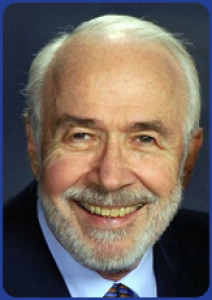WASHINGTON, Jan. 18, 2017 - President-elect Donald Trump’s delayed selection of his new agriculture secretary not only has created consternation among his farm belt supporters and many farm group leaders, it likely will mean that filling USDA’s sub-cabinet and agency officials will take even longer than usual.
Choosing, vetting and confirming senior-level officials at USDA – taken together, the second-largest number of political appointees in a civilian Cabinet agency – has been time-consuming even when a secretary is named in December and has time to consider hopefuls for top positions.
Altogether, USDA has 223 openings for non-career, political appointments, according to the popular Plum Book, formally United States Government Policy and Supporting Positions, published in December by the Senate Homeland Security and Governmental Affairs Committee.
Fourteen are presidential appointments that require Senate confirmation, including the secretary, deputy secretary and under secretaries. Two are presidential appointments that don’t need Senate approval, the Rural Utilities Service administrator and the director of the National Institute for Food and Agriculture. Non-career senior executive jobs total 48, covering most agency heads and deputies. An additional 165 are “Schedule C” workers, including several confidential assistants to top officials and state directors for rural development and the Farm Service Agency.
Those nominated for Senate confirmation usually are given the closest scrutiny, required to provide background information in great detail, including financial and travel information and previous writings that are examined by White House personnel staff and FBI investigators. The Senate Agriculture Committee requires nominees to fill out a separate detailed questionnaire. Lower level political appointees are given Civil Service Commission background checks.
Traditionally, transition teams have compiled lists of candidates for consideration by the incoming secretary and the White House. Presumably, job-seekers will have made their hopes known to the “landing team” at USDA. What is uncertain this year is how much control the White House will exercise and whether the new secretary will have freedom to choose a team. Trump has a long list of agricultural supporters from which to draw and, potentially, some of those interviewed at Trump Tower this year could end up with sub-cabinet nominations.
Background investigations can require months after the designee is chosen. Incoming USDA officials during recent transition years typically were not confirmed until May. Several Clinton administration nominees including Deputy Secretary Richard Rominger were cleared May 11, 1993. The Senate confirmed several under secretaries in the George W. Bush administration May 22, 2001, and Deputy Secretary Jim Moseley July 12, 2001. The first two new faces in President Obama’s first term – Deputy Secretary Kathleen Merrigan and Under Secretary Jim Miller – won their Senate votes April 3, 2009, with the remainder confirmed May 12, 2009.
In addition to the existing positions, the new administration also has the option to establish yet another under secretary responsible for international trade and foreign agriculture, authorized by the 2014 farm bill. USDA has not implemented the directive.
The executive pay schedule in 2016 gives the secretary $205,700 a year, the deputy secretary $185,100, under secretaries $170,400 and assistant secretaries $160,300. Non-career senior executives can be paid in a range from $123,175 to $185,100, Schedule C appointees at the top level of the GS-15 grade can earn up to $133,444 annually.
The Plum Book contains data as of June 30, 2016, on more than 9,000 federal leadership and support positions, including several beyond USDA with an interest in agriculture. Among those are seven executives at the Commodity Futures Trading Commission that are under a pay schedule that goes up to $235,300 (commissioners are paid $160,300, the chairman $170,400). The Farm Credit Administration, which also has a unique pay schedule, lists three officials who can earn a maximum of $245,792 per year.
The Environmental Protection Agency has 64 non-career jobs to fill, including 13 presidential appointees subject to Senate scrutiny – the administrator, and deputy and assistant administrators. The counselor to the EPA administrator for agriculture is a non-career senior executive position.
Other key openings are the U.S. Representative to the United Nations Agencies for Food and Agriculture in Rome, with the rank of Ambassador, and the Chief Agricultural Negotiator at the Office of the U.S. Trade Representative, presidential appointments subject to Senate approval.
#30
For more news, go to: www.Agri-Pulse.com

